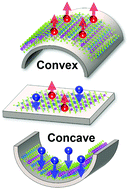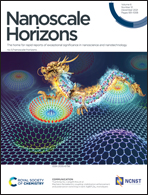Mechano-ferroelectric coupling: stabilization enhancement and polarization switching in bent AgBiP2Se6 monolayers†
Abstract
Two-dimensional (2D) van der Waals (vdW) ferroelectrics are core candidates for the development of next-generation non-volatile storage devices, which rely highly on ferroelectric stability and feasible approaches to manipulate the ferroelectric polarization and domain. Here, based on density functional theory calculations, we demonstrate that the bending deformation can not only manipulate the polarization direction and domain size of AgBiP2Se6 monolayers but also significantly improve the ferroelectric stability. The ordered polarization in the bent AgBiP2Se6 monolayers can be well maintained at a temperature of 200 K in molecular dynamics simulations; by contrast, it is broken at only 100 K for their freestanding counterparts. These phenomena can be attributed to synergic effects from the asymmetric strain energy induced by a strain gradient and a reduced migration barrier of Ag ions from convex to concave surfaces. More interestingly, a ferroelectric bubble can be induced in the monolayer under biaxial compression strain. This mechano-ferroelectric coupling represents a new mechanism and feasible route towards stabilization and polarization flip in 2D ferroelectrics.



 Please wait while we load your content...
Please wait while we load your content...